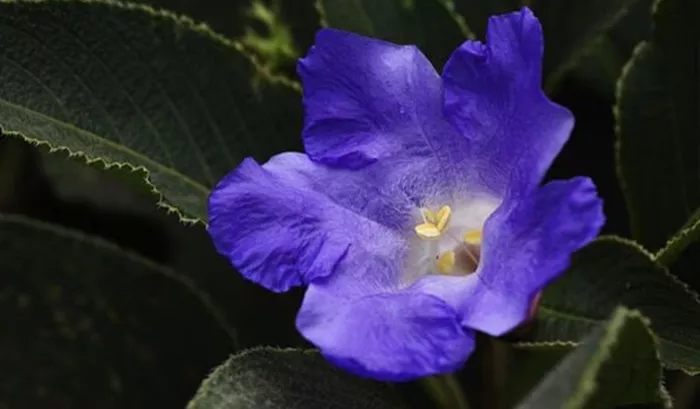This month, visitors to the Bombay Natural History Society (BNHS) conservation center in Goregaon, Mumbai, can witness a rare spectacle. The forest is adorned with the vibrant purple blooms of the Karvi flower, which only appears once every eight years. As you take in this stunning sight, you may reflect on where you were eight years ago during the last bloom and contemplate what life holds for you in the next eight years.
The Karvi flower is endemic to the Western Ghats and also found in Madhya Pradesh, Andhra Pradesh, Maharashtra, and Karnataka. Its story is closely linked to the life of Rev. Hermenegild Santapau, a remarkable individual who became an Indian citizen.
Born in 1903 in La Galera, Tarragona, Spain, Santapau became a Jesuit priest at 16. He later earned a PhD in Botany from London University and joined St. Xavier’s College in Mumbai as a Botany professor in 1940. He was an active member of various scientific bodies, including BNHS, where he served as the botanical editor of its journal from 1950 to 1968 and as Vice President in 1954. He also directed the Botanical Survey of India from 1961 to 1968. For his significant contributions to Indian flora, he received the Padma Shri from the Government of India in 1967, as well as the Civil Order of Alphonso X the Wise from the Spanish government.
The Karvi plant first attracted the attention of European scientists in the 1940s. In 1944, Dutch botanist Cornelius Eliza Bertus Bremekamp classified the plant as Carvia Callosa, derived from the local name “karvi.” Bremekamp categorized it as a “plietesial,” a type of monocarpic plant that flowers once after several years of growth before dying. Another taxonomist referred to it as Strobilanthes Callosus.
Santapau first encountered the Karvi flower in Khandala in September 1942. He noticed only a few blooms that year at Echo Point and the Bhoma Hills. However, in 1943, he was amazed by a “veritable riot of flowers.” Buds began to appear in June, giving the hills a pinkish hue. From August to October, the flowers opened to reveal a “rich cobalt blue” color. In a paper published in the BNHS Journal, Santapau wrote that the Karvi plant “shades every other plant out of existence” with its dense foliage.
Santapau was among the first botanists to systematically document the flowering patterns of the Karvi. In a 1962 article, he noted that the plant typically flowers every six to eight years, although opinions on this were divided. He observed, “As a rule, one year a few scattered plants come into flower; the following year there may be a general flowering.” He explained that this pattern results in a cycle where a year of abundant blooms is followed by fewer flowers in the years before and after.
Santapau was intrigued by the Karvi and its family. He pondered why the Karvi and other Strobilanthes species flowered after so many years of vegetative growth. He also questioned what caused them to bloom simultaneously. In the BNHS journal, he admitted, “I have been trying to find an answer to these questions…but regretfully I have to say that up to the present there is no satisfactory answer.” He concluded that we still do not understand what internal or external factors influence these plants to flower en masse.
Santapau passed away in January 1970, eight years after publishing his findings on Strobilanthes Callosus. Prime Minister Indira Gandhi honored his legacy, stating, “In Rev. Fr. Santapau’s death, we have lost an eminent scholar who has served education and science for over 40 years.” She praised his deep love for India, which motivated him to become a citizen. “He had a great knowledge of, and concern for, our plant wealth and wrote intensively on it for experts and laymen. May his memory continue to inspire all those interested in our flora.”
Though Santapau is no longer with us, the Karvi flowers are blooming once again this year. Their vibrant colors await the next generation of botanists and nature lovers to admire, photograph, and experience this unique phenomenon.
Related topics:
- Nature’s Top 9 Medicinal Plants and the Science That Supports Them
- Ground Covers to Plant with Flower Bulbs in Fall While Waiting for Spring Blooms
- Oklahoma’s Fall Native Plant Festival Highlights Wildlife Impact


